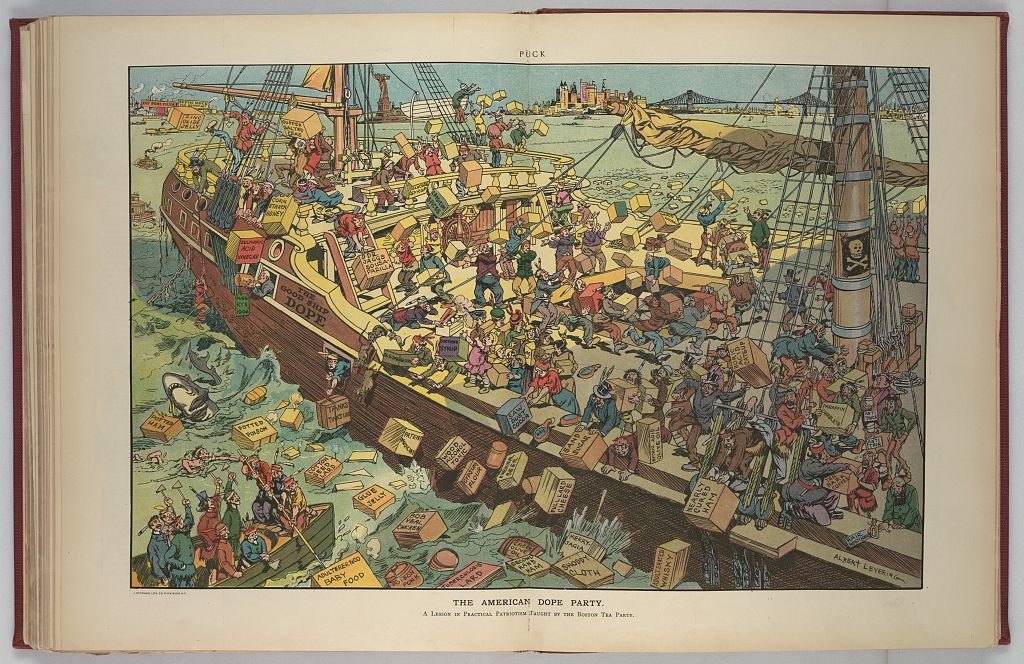Right to the Source
The American Dope Party
Do you and your students know what’s in the food you eat? In the late 19th and early 20th centuries, food safety was a big concern in the United States. A number of recent changes had led to a decline in the quality of food production. Population shifts from rural to urban areas, the need and desire to preserve food for longer periods of time, and the industrialization of food production all increased the prevalence of “non-pure” foods, which might contain dangerous fillers and additives.
The furor caused by this situation is depicted above in a 1906 cartoon from Puck magazine, entitled: “The American Dope Party: A Lesson in Practical Patriotism Inspired by the Boston Tea Party.” Show your students the cartoon and invite them to guess what is happening. Some may recognize the angry protest, with individuals throwing boxes of food overboard that bear labels such as: “nearly cured ham,” “sanded sugar,” and “wood alcohol tonic.”
Further analysis and subsequent research can provide insights as to how scientific literacy and civic action are related. For instance, each of the boxes of food can be researched to reveal something about food production at the time. Students may also want to discuss how the protest is depicted in the cartoon, including protesters in costumes that caricature Native Americans, in reference to the Boston Tea Party. Some students may be interested in learning how citizen volunteers known as “The Poison Squad” conducted experiments by ingesting impure foods to study their effects. And others may want to investigate how muckraking journalists exposed food industry practices, increasing the public’s scientific understandings and spurring civic action. On June 30, 1906, just three days after the publication of this cartoon, these efforts came to a head when President Theodore Roosevelt signed the Pure Food and Drug Act into law. It created the Food and Drug Administration and the first federal regulation of the U.S. food industry.
After studying the cartoon, students might also reflect: In what other ways are scientific literacy and civic action related today?
About the Source
“The American Dope Party” illustration is available free online from the Prints and Photographs Division of the Library of Congress at: https://www.loc.gov/item/2011645914/. The cartoon was created by Albert Levering for Puck, a humor magazine that included cartoons, caricatures, and political satire during the late 19th and early 20th centuries. The Library’s collections include over 2,500 full-color Puck cartoons. You can learn more and browse them all here: https://blogs.loc.gov/picturethis/2012/12/puck-cartoons-launched-at-last/
Another resource that students can use to follow up on some of the research topics mentioned is the Chronicling America (https://chroniclingamerica.loc.gov/) historic newspaper archive, sponsored by the Library of Congress and National Endowment for the Humanities, and which contains a research guide specifically focused on the Pure Food and Drug Act: https://guides.loc.gov/chronicling-america-pure-food-drug-act-1906.
Michael Apfeldorf (mapf@loc.gov) is an educational resources specialist at the Library of Congress.



